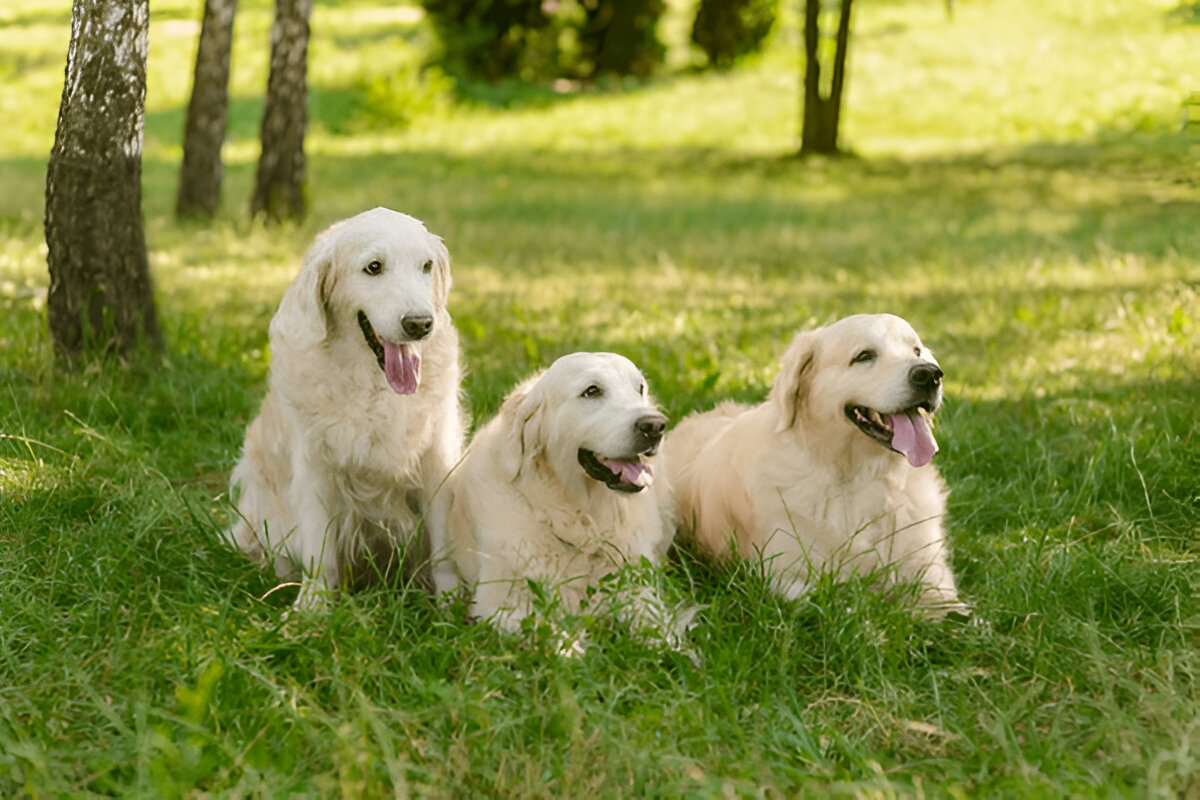Dog owners often face a variety of challenges—from pulling on the leash and excessive barking to more serious issues like aggression or fear-based behavior. While many believe that solving these problems requires expensive, one-on-one intervention, there’s an incredibly effective—and often overlooked—solution: group training classes for dogs.
In this post, we’ll explore how group dog training helps solve everyday behavioral issues, why it works for dogs of all ages and temperaments, and what to expect when you enroll. Whether you’re raising a rambunctious puppy, struggling with your adolescent dog’s rebellion, or trying to help a rescue dog adjust, group training may be the key to building a better-behaved, more confident companion.
Understanding Group Training Classes for Dogs
Group training classes are structured sessions where multiple dogs and their owners participate in obedience and behavior lessons under the supervision of a professional trainer. These classes typically focus on foundational skills—such as sit, stay, recall, and leash manners—but also expose dogs to real-world distractions and social environments.
Group classes are often organized by:
- Age (puppy, adolescent, adult)
- Skill level (basic to advanced)
- Focus (obedience, manners, reactivity, or confidence building)
This format helps dogs learn not only from the trainer but also from observing their peers. The dynamic, social nature of group training also mirrors real-life environments like parks, sidewalks, and pet-friendly businesses—making the training more practical and transferrable.
Why Group Training Works

Group training creates a controlled but stimulating environment, which is ideal for reinforcing obedience while addressing common behavioral issues. The presence of other dogs, new humans, and distractions like sounds and scents helps your dog learn to focus and obey commands even when tempted to act out.
Key benefits of group training include:
- Controlled socialization
- Improved attention and focus
- Increased owner engagement
- Desensitization to triggers
- Positive peer influence
By practicing in a group, dogs gradually learn to manage excitement, fear, and distractions while maintaining desirable behaviors.
Common Behavior Problems Group Training Can Help Solve
Let’s take a closer look at some of the most frequent behavioral challenges faced by dog owners—and how group training classes for dogs provide practical solution.
1. Leash Pulling
Problem:
One of the most common complaints among dog owners is leash pulling. It’s uncomfortable, frustrating, and sometimes even dangerous, especially with large or reactive dogs.
How Group Training Helps:
In group settings, leash walking is a central part of the curriculum. Dogs practice walking on leash in the presence of others, helping them focus on their handler rather than the distractions around them. Trainers teach techniques like redirection, stop-and-go walking, and rewarding loose-leash behavior, helping owners reinforce calm walking at home.
2. Excessive Barking
Problem:
Barking is a natural form of communication for dogs—but excessive or reactive barking can quickly become a nuisance and stressor in the home and community.
How Group Training Helps:
Group classes introduce controlled exposure to common triggers (e.g., other dogs, strangers, unfamiliar sounds), teaching dogs to remain calm instead of reacting loudly. Trainers often guide owners through impulse control exercises and positive reinforcement strategies to reward quiet behavior.
3. Jumping on People
Problem:
Jumping may seem like harmless enthusiasm, but it can be overwhelming—or even dangerous—especially around children or older adults.
How Group Training Helps:
Trainers use consistent cues and reinforcement methods to teach dogs that calm greetings are the only acceptable ones. Because the classes involve interactions with new people, dogs get real-time practice on how to behave during greetings. Over time, dogs learn that sitting calmly brings rewards and attention, while jumping does not.
4. Poor Recall (“Come” Command)
Problem:
A dog who doesn’t reliably come when called can get into trouble quickly, from running into traffic to instigating conflicts with other dogs.
How Group Training Helps:
Recall is reinforced in a structured environment with both distractions and boundaries. Dogs learn to respond to their name and handler’s cues even when surrounded by other dogs and stimuli. Repetition across multiple sessions helps solidify this life-saving command.
5. Aggression or Reactivity Toward Other Dogs
Problem:
Reactivity or aggression can stem from fear, frustration, or lack of socialization. While some dogs need more intensive support, mild to moderate cases often improve significantly through structured exposure.
How Group Training Helps:
Group training provides safe, trainer-supervised introductions and distance-based desensitization. Dogs learn to coexist with others in the same space without lunging, barking, or panicking. Trainers help owners recognize early signs of stress and apply counter-conditioning techniques to reduce reactivity over time.
6. Separation Anxiety and Confidence Issues
Problem:
Dogs that are overly dependent on their owners may suffer from separation anxiety, panic when left alone, or lack confidence in new environments.
How Group Training Helps:
Participating in a class where they must listen to commands, navigate obstacles, and work away from their owners (for short periods) helps build independence. Confidence grows as dogs are rewarded for calm, independent behavior, and successful social interactions.
Real-World Application of Skills
What makes group training classes for dogs truly special is their ability to mimic real-world conditions. Dogs practice behaviors in the presence of other dogs, children, noise, and movement—factors that are hard to simulate during private training.
Skills learned in a quiet living room may not always transfer to a park or pet store. Group classes help bridge that gap by exposing dogs to gradual levels of stimulation, so they can learn to stay calm and respond under pressure.
Benefits for the Owner

It’s not just the dogs who benefit—owners gain essential knowledge and confidence through group training too.
Owner Advantages:
- Community support: Share experiences, tips, and encouragement with other dog owners.
- Consistent feedback: Get live corrections and coaching from professionals.
- Better understanding: Learn how to read your dog’s body language and respond appropriately.
- Accountability: Weekly classes provide structure and motivation to stick with the training.
You’ll also become more skilled at managing your dog in public, which increases safety and enjoyment during walks, visits, or travel.
Who Should Enroll in Group Training?
Group training classes are well-suited for:
- Puppies needing early socialization
- Adolescent dogs testing boundaries
- Adult dogs with mild behavior challenges
- Rescue dogs adjusting to new environments
- Owners looking for affordable training options
They are not ideal for dogs with extreme aggression or severe anxiety—these cases may require private training or behaviorist intervention first. However, many dogs with minor to moderate issues thrive in a group setting once properly introduced.
What to Expect in a Group Training Class
Each training facility will have its own structure, but most group classes follow a similar format:
A Typical Class Includes:
- Introduction and warm-up exercises
- Skill of the week (e.g., “heel” or “leave it”)
- Practice rounds with distractions
- Problem-solving tips and Q&A
- Cool down and socialization opportunities
Class Size:
Ideally, classes have 4 to 10 dogs—small enough for individual attention, but large enough to provide social learning.
Duration:
Classes usually run for 45 minutes to 1 hour, once a week, over a 4–8 week period.
Choosing the Right Group Training Program

Look for dog training academies or providers with:
- Certified trainers (CPDT-KA, KPA-CTP, etc.)
- Positive reinforcement philosophy
- Experience with group dynamics and behavior
- Clean, safe, well-ventilated facilities
- Transparent curriculum and pricing
Read reviews, ask for referrals, and even observe a class before enrolling to ensure it’s the right fit for your dog’s needs and personality.
Final Thoughts: A Smarter Way to Train
Behavior problems can strain even the strongest bond between dogs and their humans. But you don’t have to face them alone—and you don’t always need to invest in costly, isolated training to see results.
Group training classes for dogs offer a powerful combination of socialization, structure, and practical behavior correction. Through shared experience, skilled guidance, and consistent practice, your dog can overcome bad habits and emerge more confident, obedient, and joyful.
One of the top-rated providers offering effective and engaging group classes in Chicago is Prestige Dog Training. Known for their certified trainers, positive reinforcement methods, and structured curriculum, Prestige’s group programs are ideal for dogs of all ages and behavior levels. Whether you’re dealing with leash pulling, reactivity, or just looking to build better focus and manners, their expert-led group sessions provide real results in a supportive environment.
So if you’re tired of pulling, barking, or chaotic walks, consider joining a group training class at Prestige Dog Training. The path to a calmer, more connected life with your dog may be just a class away.



